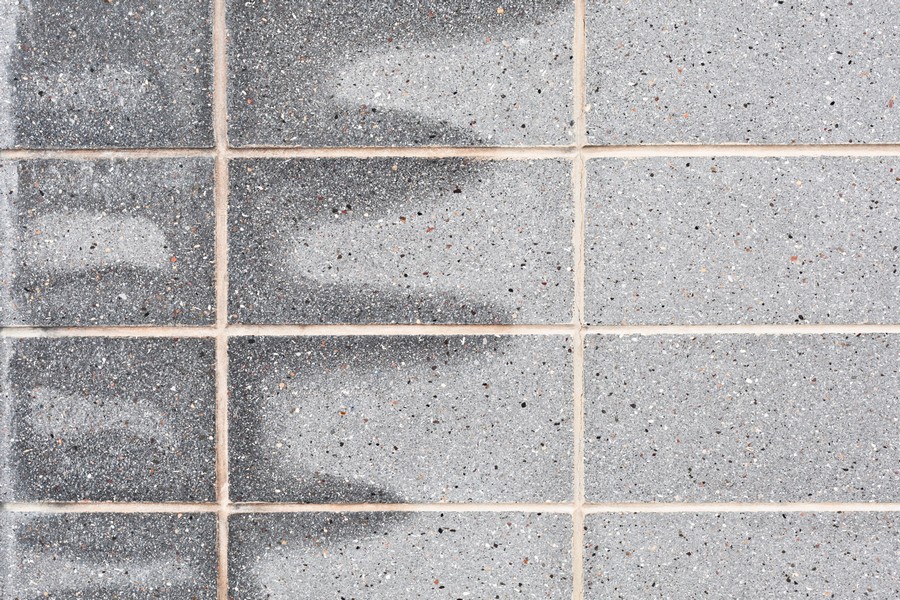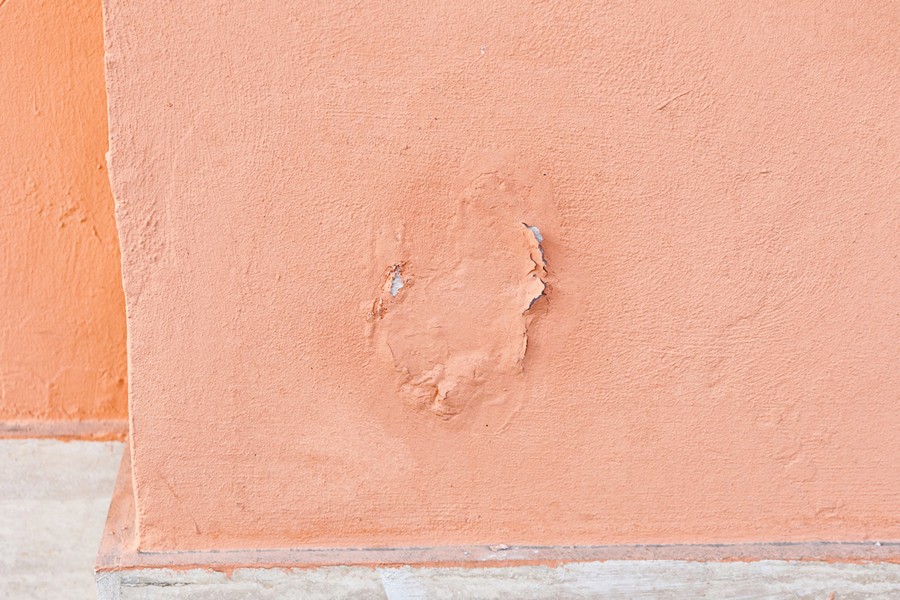Contact Brighton Damp Treatments Now to Speak With an Expert.

Rising damp is an issue that affects many buildings; it occurs when moisture wends its way up walls and infiltrates the very foundations of an edifice. This happens due to capillary action, where porous materials like bricks or stones draw liquid upwards from beneath them. If not addressed promptly, rising damp can lead to problems with plastering, floorboards and other components of a structure’s framework.
Rising damp is a phenomenon that occurs when water moves upwards through porous materials in contact with the ground. This is caused by air drying on upper surfaces, making the wall act as a ‘wick’, pulling up water from below via capillary action and evaporating it into the atmosphere. The moisture will keep climbing until gravity pulls it back down again, only if evaporation is possible.
Water derived from the ground can carry various nitrates, chlorides and other salt compounds (hygroscopic ground salts) into bricks and plaster. As water evaporates, these salts accumulate in the wall over time. Ground salts are apt to absorb moisture easily due to their solubility which can lead to wood rot in neighbouring wooden structures. Therefore, even if rising damp is resolved, the plaster may still remain wet or contaminated. Consequently, when dealing with increasing moistness, it is standard practice to remove all plastering material.
This type of moisture occurs due to water seeping into the ground or beneath it, rather than penetrating damp which is caused by rain entering walls and ceilings. Installing a Damp Proof Course (DPC) that prevents rising humidity through walls and floors is the most useful solution for dealing with rising dampness issues.

Rising damp and penetrating damp are two distinct types of moisture damage that can occur in buildings. The main difference between them is the source of the water.
Rising damp is caused by ground-level moisture travelling up through a wall or masonry due to capillary action, while penetrating damp occurs when water penetrates a building’s external walls from outside sources such as rainwater, snowmelt or condensation.
The signs of rising dampness can be identified by wet patches on internal walls that rise upwards towards the ceiling line, while those of penetrating damp often appear lower down on the wall and may have an external cause such as blocked gutters or faulty pointing. Both types of damage can lead to mould growth if not rectified promptly.
The most common point of difference between rising and penetrating damp is the height to which they occur. Rising damp only reaches up to one metre above ground level, whereas penetrating damp can affect any area of a building.
Rising damp is a common problem in buildings and can cause extensive damage if left untreated. There are several signs that can indicate rising damp, including: discolouration on walls or ceilings, mould growth, an unpleasant musty smell, peeling paint or wallpaper and flaking plaster. If you notice any of these symptoms in your property it is important to address them as soon as possible to prevent further damages from occurring. Professional help should be sought for more severe cases of rising damp so that the best course of action can be determined.
The damp staining and tidemarks on walls is a common issue in many homes. These are caused by rising damp, which occurs when water rises up through the brickwork or masonry of your home’s exterior walls. It can be an indication of a problem with your building’s waterproofing system, so it’s important to take action as soon as possible if you notice this happening.
Other indicators of rising damp can include:
Other indications of potential rising damp are wallpaper that appears to be discoloured or lifting away from the wall, a white chalky residue on walls/surfaces which could be due to salt deposits and a musty odour emanating from either the flooring or masonry.
Contact Brighton Damp Treatments Now to Speak With an Expert.
Rising damp is a common problem in buildings and can cause extensive damage if left untreated. There are several signs that can indicate rising damp, including: discolouration on walls or ceilings, mould growth, an unpleasant musty smell, peeling paint or wallpaper and flaking plaster. If you notice any of these symptoms in your property it is important to address them as soon as possible to prevent further damages from occurring. Professional help should be sought for more severe cases of rising damp so that the best course of action can be determined.
The damp staining and tidemarks on walls is a common issue in many homes. These are caused by rising damp, which occurs when water rises up through the brickwork or masonry of your home’s exterior walls. It can be an indication of a problem with your building’s waterproofing system, so it’s important to take action as soon as possible if you notice this happening.
Are you looking to resolve damp-related issues in your home or business premises? If so, Brighton Damp Treatments are the ideal choice. Our team of highly experienced specialists offer a range of services that have been designed to identify and treat any underlying causes of rising damp, penetrating damp and condensation.
We take great pride in providing our customers with quality solutions that are tailored to their specific needs. With years of experience in the industry, we understand how frustrating it can be when dealing with unwanted moisture and strive to provide a swift resolution for all types of properties – whether residential or commercial.

The advantages associated with opting for Brighton Damp Treatments are numerous. With an experienced team specialising in all manner of damp related issues – ranging from rising and penetrating dampness to woodworm infestations – choosing this service offers assurance that any problem will be addressed promptly and effectively. Additionally, having access to the most current treatments ensures complete satisfaction in the results delivered; furthermore each job is covered by a guarantee providing customers with added peace-of-mind that nothing has been overlooked or left undone.
CSSW and CSRT Surveyors are delighted to offer you their expertise in surveying. Our team of professionals can provide a range of valuable services that will help you assess the condition of your property and make informed decisions about its future. We understand the importance of careful consideration when making such important investments, so we ensure that our surveys are conducted with accuracy and attention to detail. Whether it’s for residential or commercial purposes, our surveyors have the experience and skills necessary to deliver accurate results. With us, you can trust that your property is in safe hands.
Even when rising damp is minimised, there will frequently be a tiny amount of moisture trapped in the substrate owing to salt contamination. PTL will install a chemical DPC system to control the problem if necessary. At regular intervals, the chemical DPC is injected into the walls. The salt-contaminated plaster will be replaced, and the decorative surface will be protected from any remaining moisture in the wall.
Water-attractive hygroscopic salts, which are transferred from the earth to the brickwork by increased wetness, will continue to draw moisture, especially during periods of high humidity. The damp-proof course will keep the dampness from rising any further. Re-plastering to the PTL specification is necessary if this occurs to an unsatisfactory degree. PTL has expert plasterers on staff and would be happy to give quotes for this job.
Damp proofing is a method of preventing moisture from entering a structure, especially from rising damp. A ‘tide line’ of yellowish or brownish stains or blown plaster in the bottom section of your wall above your skirting board are typical symptoms of rising dampness. You can also have decaying or moist skirting boards or floors.
Performing a minor repair for rising damp (e.g. repointing or painting over the damp) will increase the cost of the job in the long run and require you to redo the job later.
A damp proof course is a water-resistant barrier that runs the length and width of your wall. It prevents groundwater from creeping up through the wall due to capillary action.
We can offer you a variety of damp proofing choices at Sussex Damp Experts, each with its own set of advantages. A damp proof course (DPC) is a method that aids in the control of rising dampness by regulating the moisture caused by capillary action.
A damp proof membrane (DPM) is a unique membrane added to a DPC to combat dampness. A DPM can use a silicone material to help manage moisture. Buildings are protected from water and moisture, including rain, using this coating process. It also contains cement, such as shotcrete, which provides moisture, water, and pressure resistance. The construction of cavity walls creates a space between the inner and outside walls to keep water out, whereas pressure grouting is used to plug any gaps in masonry walls.
If you discover rising dampness in your property, act soon! Otherwise, your property may face serious issues.
Beyond the visual soreness caused by damp problems, dampness can cause severe damage to a property’s structure and compromise structural integrity if not addressed on time. There is also evidence that it can induce respiratory difficulties, albeit this mainly affects people who already have a respiratory problem. Whether you have damp developing due to condensation, leaking guttering, or leaking pipes, call our damp removal and proofing experts immediately to get it fixed as soon as possible. Our commitment to providing excellent customer service, as well as our depth and breadth of knowledge, are the foundations of our continued success.

Our team has over XX years of combined expertise offering damp proofing in Brighton. If you are experiencing damp issues in Brighton and the surrounding areas, please call our damp specialist team on 01273 920588 to schedule a survey or treatment.
Following our instructions, one of our CSRT and CSSW trained surveyors will thoroughly examine and provide a report, price quote and treatment suggestions.
Suppose you decide to go ahead with our damp proofing services. In that case, we have a complete team of damp proofing specialists who have a comprehensive portfolio dealing with damp problems, such as dry rot and woodworm, wet rot, wood rot, basement waterproofing, internal dampness, rain penetration, condensation control both in commercial properties and private homes.
Book a damp survey appointment or give us a call, and we can arrange for a local team to contact you. We have many rising damp investigators that can efficiently and promptly schedule a visit to your house when most convenient for you.
The costs associated with addressing a damp problem depend on many different factors such as the property’s dimension and architecture, the type of damp causes, the materials involved, among others.
Because there’s a comprehensive range of details to consider, don’t hesitate to contact our fully trained team to book a survey and have one of our friendly team members inspect the property and fully understand the situation, thus providing you with the most cost-effective quote for treatments and repairs.

We follow excellent standards in damp proofing treatments, professional re-plastering, wood preservation and are experts in performing damp surveys.
We provide highly customised, competent, and dependable damp proofing treatment and repair services to homes, local authorities, small businesses, and large commercial properties.
Call us today on 01273 920588 to speak with a member of our helpful team about your needs.
For your safety and security, all of our work is covered by our company’s guarantee. We are also members of the Guarantee Protection Scheme, an independent insurance policy that covers the duration of your guarantee if you want to take it out.


Max and his team have been at our property all week and I really can’t thank them enough for the fantastic job they’ve done on plastering both our walls and ceilings. They have literally transformed the appearance of our house! Not only has Ma…
From start to finish Max has been incredable. His knowledge lin damp proofing is second to none and his team where very clean and polite. The plastered finish was like glass so happy we choose Max Plastering for job.
Lovely bunch of lads left a very neat and clean job. Problem was solved.
Perfect Finnish and all left clean and tidy and no mess. Used Max previously and would not hesitate to ask him carry out more work.
Max, Harvey and Stuart arrived promptly as arranged. Done a great job on our outside rear wall. Work completed to a high standard, removal of all old material and cleaned up after themselves. I am so pleased with the standard of their work they ar…
They turned up on time and carried out the works in a very professional manor leaving the front of the house clean and tidy. Very impressed would definitely recommend.
I have to say that on every level Max (with Stuart and Harvey) did an extremely professional job! They explained what they were going to do, they were polite and courteous and respected that they were coming into our home. The plastering is of the…
I called max and he managed to come around the same day to do a survey. The next day I received an extremely detailed survey compared to any other damp proofer which made me feel very at ease that he was going to do the right job. Max and team tur…
Contact Brighton Damp Treatments Now to Speak With an Expert.